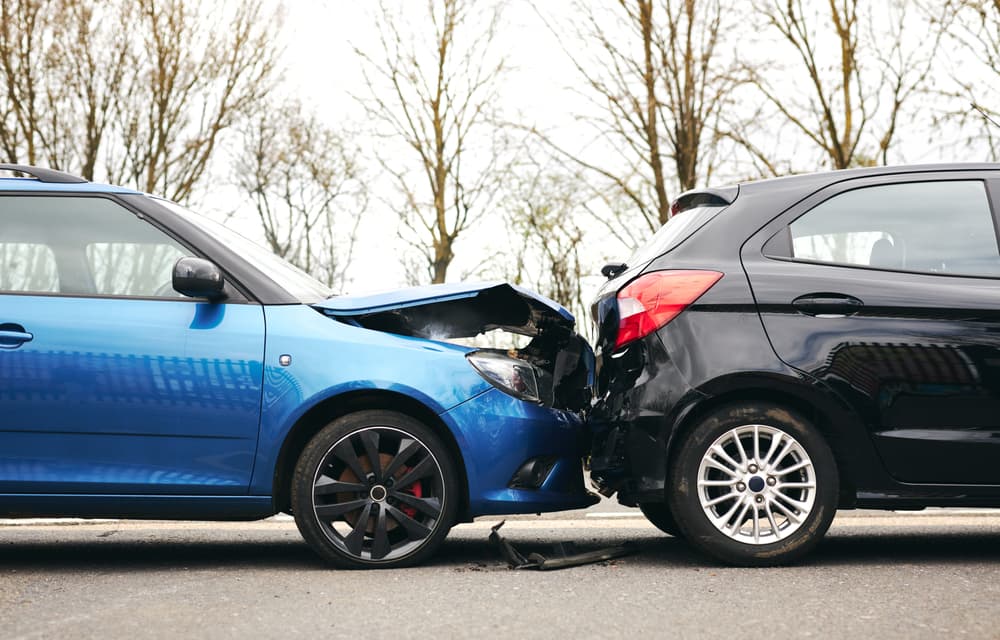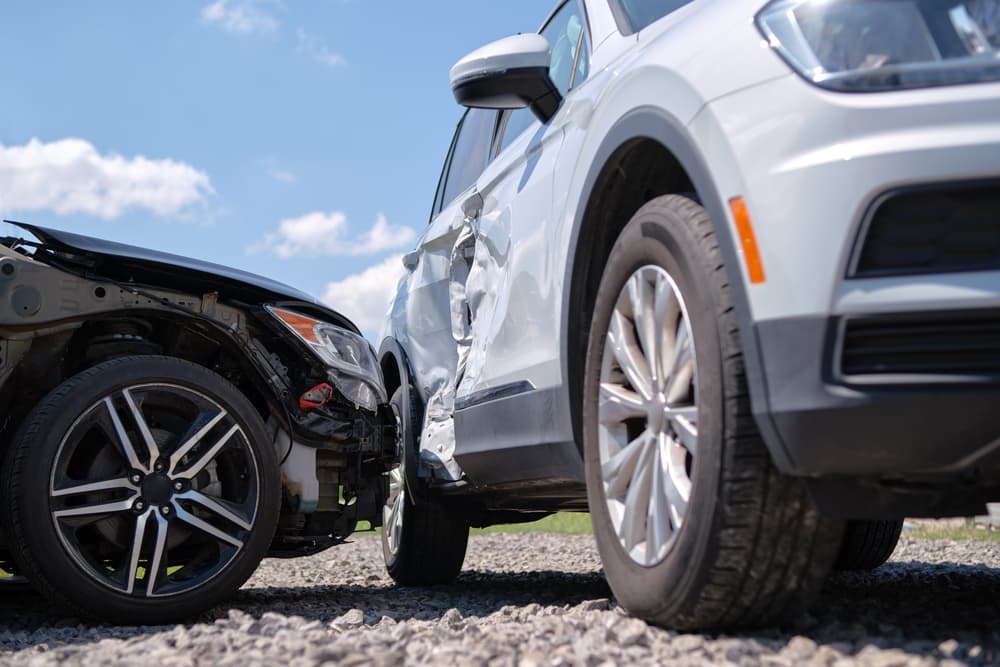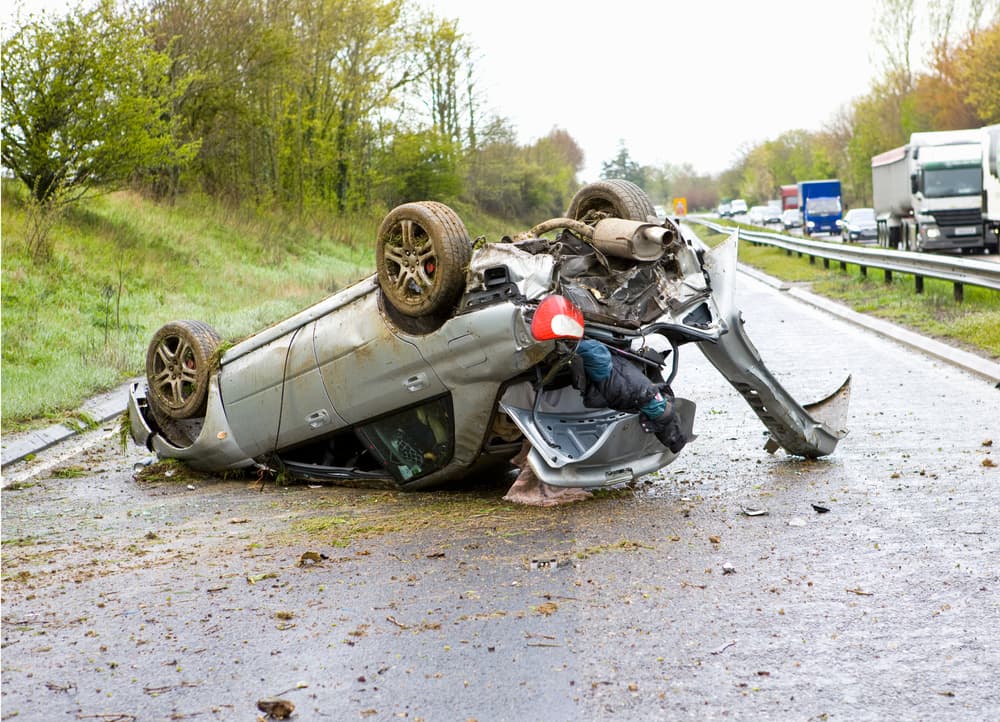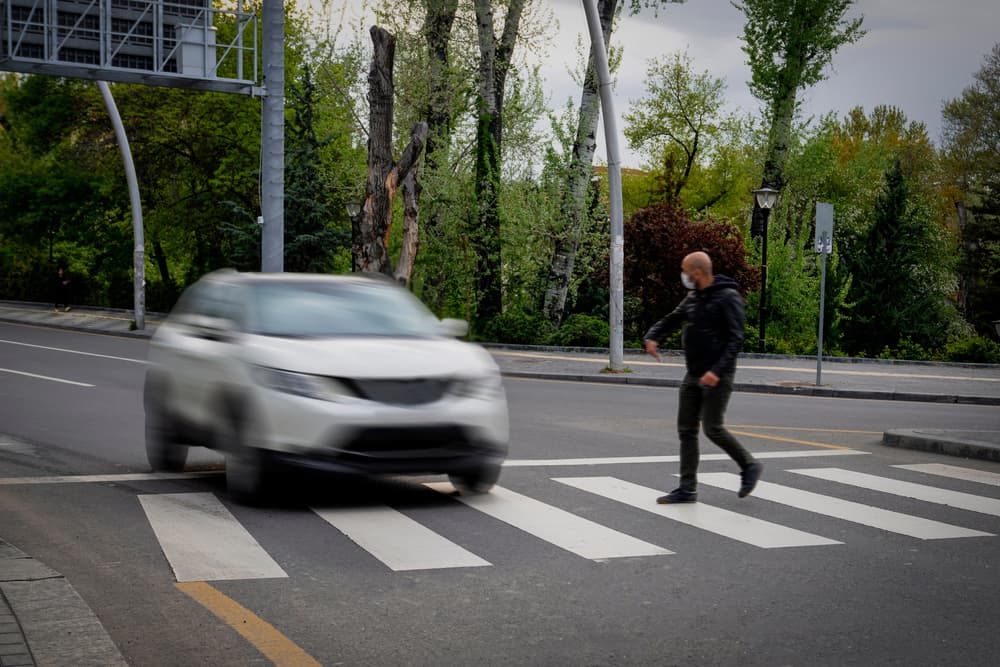
Car accidents in St. Louis have killed more than 170 people and injured between 14,000 and 15,000 people annually in recent years.
At Gray Ritter Graham, we see firsthand how devastating these crashes are for our clients and their families. From seemingly minor fender-benders on downtown streets to multi-vehicle crashes on Interstate, every type of crash can have severe and long-lasting consequences.
After a car accident in St. Louis, an experienced and proven St. Louis car accident lawyer with Gray Ritter Graham can help.
We’ve helped hundreds of car accident survivors struggling with physical injuries, emotional trauma, financial distress, or the inconsolable grief of losing a beloved family member get the compensation they deserve.
While we can’t turn back the clock, we can help you secure the resources you deserve for peace of mind and healing.
Ten Common Types of Car Accidents in St. Louis
The physics of motion, human error, and the varied, unpredictable nature of our environment combine to make driving an inherently risky activity.
Despite crash avoidance systems, semi-autonomous features, and other technological safety advancements, the rate of car accidents in St. Louis continues to climb.
Seemingly minor differences in speed, angle, or timing can dramatically alter the outcome of a crash. They also underscore the legal responsibility to drive safely, which every driver assumes when they take the wheel.
Rear-End Collisions
 Rear-end collisions are the most frequent accidents on St. Louis highways and roads. They often occur in heavy traffic areas, like the morning rush on I-64 or during congested game-day traffic near Busch Stadium. Even seemingly minor "fender-benders can cause serious injuries, particularly whiplash and other neck and back problems, while high-speed rear-end crashes can be extremely deadly.
Rear-end collisions are the most frequent accidents on St. Louis highways and roads. They often occur in heavy traffic areas, like the morning rush on I-64 or during congested game-day traffic near Busch Stadium. Even seemingly minor "fender-benders can cause serious injuries, particularly whiplash and other neck and back problems, while high-speed rear-end crashes can be extremely deadly.
Common causes of rear-end collisions in St. Louis include:
- Distracted driving (e.g., texting while driving)
- Tailgating
- Sudden stops due to traffic congestion
- Poor road conditions, especially during winter weather
If you've been rear-ended, it's important to seek medical attention even if you feel fine initially. Some injuries, like whiplash, may not manifest symptoms immediately but can lead to chronic pain if left untreated.
Side-Impact Collisions
 Also known as T-bone accidents, side-impact collisions are particularly dangerous due to the limited protection offered by a vehicle's sides. These accidents frequently occur at intersections, such as the notoriously tricky junction of Gravois Avenue and Chippewa Street in South City.
Also known as T-bone accidents, side-impact collisions are particularly dangerous due to the limited protection offered by a vehicle's sides. These accidents frequently occur at intersections, such as the notoriously tricky junction of Gravois Avenue and Chippewa Street in South City.
Side-impact collisions can result from:
- Running red lights or stop signs
- Failure to yield right-of-way
- Poor visibility at intersections
- Aggressive driving behaviors
Injuries from side-impact collisions can be severe, including broken bones, internal injuries, and traumatic brain injuries.
Head-On Collisions
While less common than other accidents, head-on collisions are often the most devastating. These accidents can occur on two-lane roads like Missouri Route 141 or when a driver crosses the center line on city streets.
Factors contributing to head-on collisions include:
- Drunk or impaired driving
- Fatigue, especially on long stretches of highway
- Improper passing maneuvers
- Wrong-way driving on one-way streets or highway ramps
The force of a head-on collision can cause catastrophic injuries or fatalities. Survivors often face long recovery periods and may require extensive medical treatment and rehabilitation.
Rollover Accidents
 Taller vehicles like SUVs and trucks are more prone to rollovers, but rollover accidents can happen to any vehicle under the right circumstances. Areas with sharp curves, like the approach to the Stan Musial Veterans Memorial Bridge, can be hotspots for rollovers if drivers are traveling too fast.
Taller vehicles like SUVs and trucks are more prone to rollovers, but rollover accidents can happen to any vehicle under the right circumstances. Areas with sharp curves, like the approach to the Stan Musial Veterans Memorial Bridge, can be hotspots for rollovers if drivers are traveling too fast.
Factors that increase the risk of rollovers include:
- High center of gravity in certain vehicles
- Speeding, especially around curves
- Overcorrecting after drifting off the road
- Tire blowouts
Rollover accidents often result in severe injuries due to the violent motion and potential for ejection. Wear a seatbelt to reduce the risk of serious injury or death in these accidents.
Multi-Vehicle Accidents
Multi-vehicle accidents, or pileups, are chaotic and complex. They tend to occur on busy highways like I-270 during rush hour or in bad weather conditions. The chain reaction nature of multi-vehicle crashes can sometimes make determining fault difficult. They can also result in multiple injury claims.
Common scenarios leading to multi-vehicle accidents include:
- Sudden stops in heavy traffic
- Poor visibility due to fog or heavy rain
- Ice or snow on roadways
- Rubbernecking at existing accidents
If you were injured in a multi-vehicle accident, work with an experienced and proven car accident lawyer who will establish liability and maximize your compensation.
Sideswipe Accidents
Sideswipe accidents happen when the sides of two parallel vehicles make contact. These are common on multi-lane roads like I-44 or when merging onto highways. While often less severe than other collisions, sideswipe accidents can still cause significant damage and injuries, especially if they cause a vehicle to lose control.
Causes of sideswipe accidents include:
- Improper lane changes
- Blind spot errors
- Merging without proper space
- Drifting out of lane due to distraction or fatigue
Merging Accidents
Merging onto busy highways like I-55 or I-70 can be stressful, and unfortunately, merge lanes are hotspots for accidents. These crashes often occur when drivers fail to yield right-of-way or misjudge the speed and distance of surrounding traffic.
Key factors in merging accidents include:
- Short acceleration lanes
- Heavy traffic conditions
- Failure to use turn signals
- Aggressive driving behaviors
Merging accidents can result in sideswipes, rear-end collisions, or even rollovers if a vehicle is forced off the road. Being extra vigilant and patient during merging can reduce the risk of these accidents.
Low-Speed Accidents
Don't be fooled by the term low-speed, as these accidents, which often occur in parking lots or residential areas, can still cause significant damage and injury. Places like the lots around St. Louis Lambert International Airport or busy shopping centers like the St. Louis Galleria are common sites for these crashes.
Common scenarios in low-speed accidents include:
- Backing out of parking spaces without checking surroundings
- Distracted driving in parking lots
- Failure to yield in parking aisles
- Pedestrian collisions in busy lots
While these accidents may seem minor, they can still result in injuries, especially if pedestrians are involved. Always be aware of your surroundings, even in low-speed areas.
Blind Spot Accidents
Blind spot accidents can occur on any road but are particularly common on highways with multiple lanes. The interchanges where I-64, I-55, and I-44 converge near downtown St. Louis can be especially tricky for navigating blind spots due to the frequent lane changes required.
Factors contributing to blind spot accidents include:
- Failure to check blind spots before changing lanes
- Improperly adjusted mirrors
- Driving in another vehicle's blind spot for extended periods
- Large vehicles with significant blind spots
Always be aware of your vehicle's blind spots and those of the vehicles around you. Drivers should always use turn signals and check carefully before changing lanes, but many motorists frequently fail to do so.
Intersection Collisions
Intersections are another hotspot for car accidents in St. Louis, especially in busy areas like the Loop, Grand Center or the Central West End. With multiple directions of traffic converging, there's a higher risk of collisions if a driver isn’t paying attention or following traffic laws.
Common causes of intersection accidents include:
- Running red lights or stop signs
- Turning left without yielding to oncoming traffic
- Distracted driving
- Speeding through intersections
Intersection accidents can result in various types of collisions, from T-bone crashes to rear-end accidents.
Collisions with Pedestrians
 St. Louis has many pedestrian-heavy areas. Unfortunately, this means collisions between vehicles and pedestrians are all too common.
St. Louis has many pedestrian-heavy areas. Unfortunately, this means collisions between vehicles and pedestrians are all too common.
Risk factors for pedestrian accidents include:
- Distracted driving or walking
- Failure to yield at crosswalks
- Speeding in residential areas or school zones
- Poor visibility, especially at night or in bad weather
Pedestrian accidents often result in severe injuries due to the lack of protection for the person on foot. If you were injured in a pedestrian accident, consult with an experienced St. Louis car accident lawyer to see if you are eligible for compensation.
Collisions with Bicycles
With the growing popularity of cycling in St. Louis, both for recreation and commuting, collisions between cars and bicycles have become more frequent. Areas like the Riverfront Trail or the streets around Washington University can see heavy bicycle traffic.
Common scenarios in bicycle accidents include:
- Drivers failing to see cyclists
- Opening car doors into the path of cyclists
- Turning right without checking for bicycles in the bike lane
- Cyclists not following traffic laws
Like pedestrian accidents, bicycle collisions can result in serious injuries for the cyclist. If you were injured in a bicycling accident through no fault of your own, work with a St. Louis car accident lawyer.
Where Do Most Car Accidents Happen?
While accidents can happen anywhere, certain locations and road types see a higher frequency of crashes.
Close to Home
Surprisingly, most accidents occur close to home. According to the National Highway Traffic Safety Administration (NHTSA), about 52% of all car accidents occur within a 5-mile radius of home, and 69% occur within a 10-mile radius. This could be due to drivers becoming complacent in familiar surroundings or losing focus due to repetition.
Rural Highways and Roads
While most crashes occur in busy urban areas like downtown St. Louis and the highways surrounding it, a disproportionate number of fatal crashes occur on rural roads and highways. The winding nature of many rural roads in Missouri, combined with higher speed limits, lack of barriers between lanes, and fewer traffic controls, can make driving on rural roads remarkably dangerous.
Urban Streets
In St. Louis, busy urban streets see their fair share of accidents. Areas with high pedestrian traffic, like the Delmar Loop or South Grand, can be particularly risky due to the mix of cars, pedestrians, and sometimes streetcars or buses.
Intersections
Intersections are notorious accident hotspots. In fact, about 40% of all crashes occur at intersections, according to the NHTSA. In St. Louis, complex intersections like where Hampton Avenue meets I-64 or the intersection of Kingshighway and Manchester Avenue are known for their high accident rates.
Parking Lots
Parking lot accidents are surprisingly more dangerous than expected. The mix of vehicles in tight spaces, distracted drivers, and wandering pedestrians creates ample opportunity for accidents. While typically low-speed, parking lot collisions can still cause significant injuries.
Even slow-moving vehicles exert considerable force, potentially leading to whiplash, fractures, or severe injuries. The prevalence of large vehicles with limited visibility further increases risks, especially for children who may be hidden from a driver's view.
25 Dangerous Intersections in and around St. Louis
While any intersection can be the site of an accident, some in St. Louis are known for their higher-than-average collision rates.
Here's a comprehensive list of locations where car accidents commonly occur:
- Gravois Avenue and Chippewa Street
- I-70 and I-270 interchange
- Hampton Avenue and I-64
- Kingshighway Boulevard and Manchester Avenue
- Grand Boulevard and Forest Park Avenue
- Olive Boulevard and I-170
- Page Avenue and I-270
- Lindbergh Boulevard and Tesson Ferry Road
- Natural Bridge Road and Union Boulevard
- Skinker Boulevard and Clayton Road
- Arsenal Street and Grand Boulevard
- Jefferson Avenue and Market Street
- Hanley Road and Manchester Road
- Lemay Ferry Road and South Lindbergh Boulevard
- Big Bend Boulevard and Forest Park Parkway
- Gravois Ave. and Morganford Rd. and Delor St.
- Brentwood Blvd. and Highway 40 and 170
- S. Hanley Rd. and Eager Rd. by Highway 40
- Chippewa St. at Jefferson Ave. and S. Broadway
- Memorial Dr. at Lumiere Pl. Blvd. AKA. Dr. Martin Luther King Bridge
- S. Kingshighway Blvd. at Highway 40
- S. Jefferson Ave. and Sidney St. and Gravois Ave.
- Lindell Blvd. and Olive St.
- Chippewa St. at Watson Rd.
- Cherokee St. and Gravois Ave.
These are some of the most challenging intersections in St. Louis. Many of them are complex, with multiple lanes of traffic coming from different directions. They may also have high traffic volumes, especially during rush hours. Always exercise extra caution when approaching these areas.
Leading Causes of Car Accidents in St. Louis
Understanding the common causes of accidents can help you stay vigilant on the road.
Here are some of the leading factors contributing to car crashes in St. Louis:
- Distracted Driving
- Speeding
- Drunk Driving
- Aggressive Driving
- Weather Conditions
- Fatigue
- Failure to Obey Traffic Signs/Signals
- Poor Vehicle Maintenance
Common St. Louis Car Accident Injuries
Car accidents can result in a wide range of injuries, from minor bruises to life-threatening trauma.
Some of the most common injuries seen in St. Louis car accidents include:
- Whiplash
- Traumatic Brain Injuries (TBI)
- Spinal Cord Injuries
- Broken Bones
- Soft Tissue Injuries
- Internal Injuries
- Cuts and Lacerations
- Psychological Trauma
- Wrongful death
Hire a Car Accident Lawyer Before Talking with Insurance Companies
While you should report the basic facts of the accident to your insurance company promptly, hire a St. Louis car accident lawyer before communicating with insurance companies about a settlement, especially those representing the at-fault party.
Insurance companies will do anything legal to minimize payouts. They may use various tactics to reduce the value of your claim or deny it altogether. An experienced car accident lawyer with Gray Ritter Graham can:
- Protect you from making statements that could harm your case
- Accurately value your claim, including future medical expenses and lost earnings
- Handle all communication with insurance companies on your behalf
- Gather and preserve evidence to support your claim
- Negotiate for a fair settlement that truly compensates you for your losses
- Take your case to trial if a fair settlement can't be reached
Contact a St. Louis Car Accident Lawyer Today
If a car accident in St. Louis has turned your life upside down, a personal injury attorney at Gray Ritter Graham can help you get back on track.
Our goal is to secure the maximum compensation for you so that you can move ahead. We have dedicated our careers to helping people just like you through some of the darkest times of their life.
Call us today at (314) 241-5620 or contact us online to schedule a free consultation without further obligation.
After receiving his B.S.N. (magna cum laude) in 1994, Graham worked in cardiac acute care and intensive care units at Barnes Hospital before receiving his law degree (cum laude) in 2000. Since then, Graham has combined his medical ...


 RSS Feed
RSS Feed